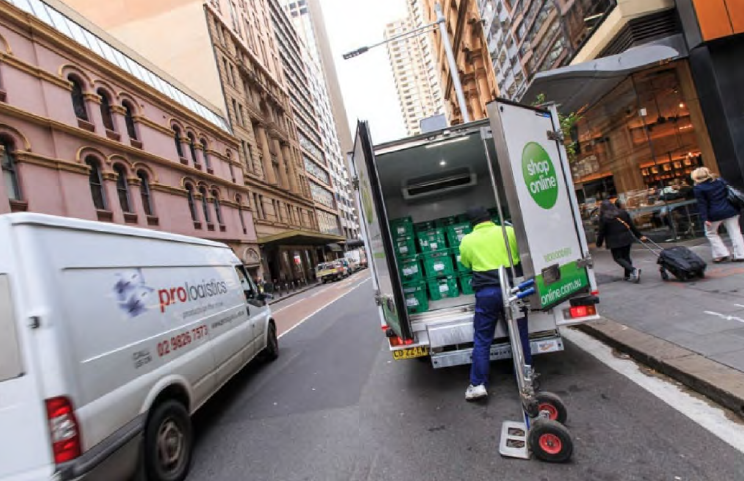Measurement and Forecasting Tools
Each type of building generates freight and servicing tasks. Every weekday, approximately one commercial vehicle travels into Sydney CBD for every 20 people living or working inside the city.
In order for urban planners, developers and government to create places for people to live, socialise, shop and interact within the city environment, there needs to be an understanding of the freight task and its role in enabling this environment.
There are a number of ways to measure the activity of freight and servicing vehicles. These include the measurement of on street and off street activity as well as profiling expected demand by usage type through data collection, surveys and analysis. When developing a profile it is important to ensure all movements are captured, whether it is via a loading dock or from the kerb, by a cyclist or a walker and whether vehicles are parked legally or illegally.
Understanding the task
Each type of freight movement and servicing requirement has different operating characteristics. These characteristics need to be considered when planning loading and servicing facilities in buildings and precincts.
Loading facilities designed to accommodate the differing characteristics of freight and service vehicle movements they are likely to generate will help optimise operational efficiencies and, by doing so, minimise potential road network and kerbside impacts.
Freight profiling
Businesses and customers generate a diversity of freight and servicing transport movements that occur every day. Appreciating the array and purpose of different types of transport in use can assist in planning for better city environments.
Characteristics of freight and servicing movements
Measuring and understanding freight activity can have its complexities. In the Toolkit we outline we outline several methods TfNSW and other authorities have used in recent years to measure and assess on and off-street freight activity.
Freight forecasting and demand management
Similar to the type of freight, the quantity and profile of activity must also be considered. Based on freight and servicing measurement practices and the development of building profiles, it is feasible to estimate future demand and plan for customers’ needs in a new building or precinct. Good planning can ensure the facilities and capacity is right.
There are a number of ways to measure the activity of freight and servicing task. These include the measurement of on street and off street activity as well as categorising expected demand by usage type through data collection, surveys and analysis.
